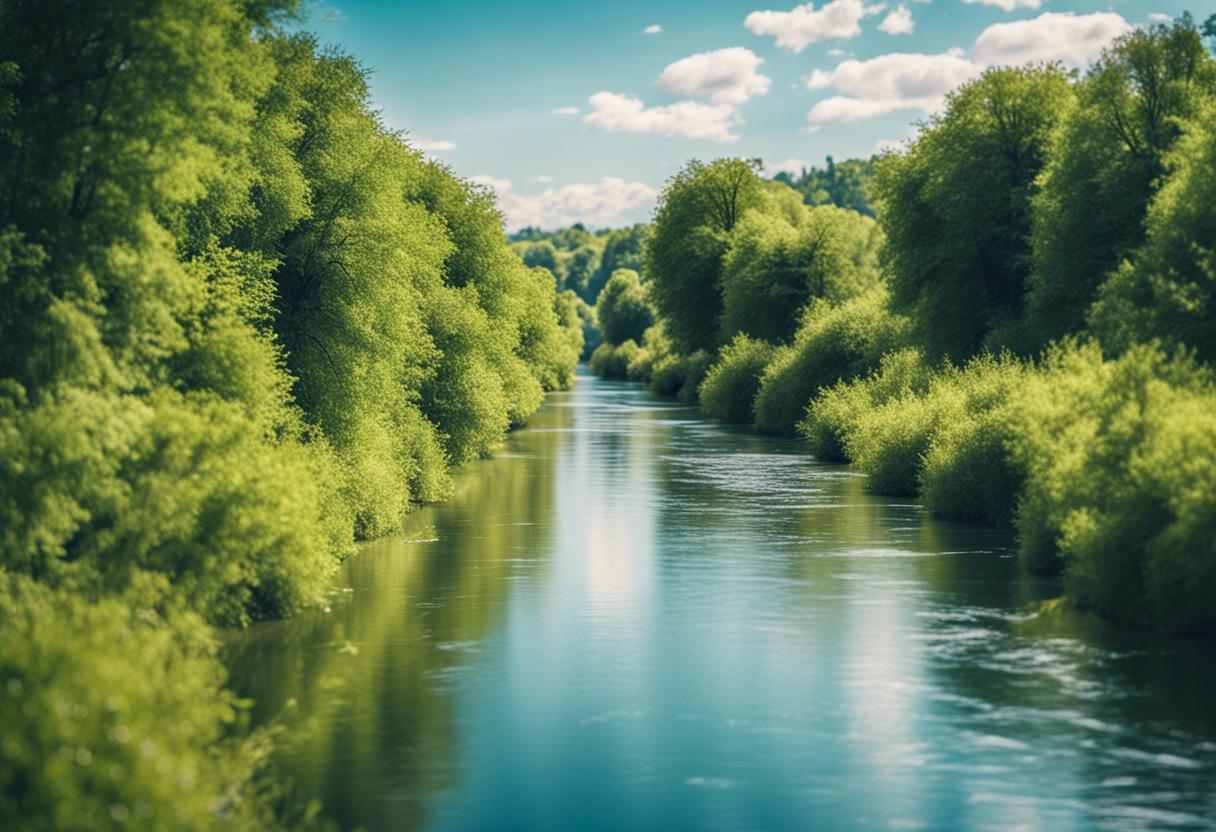Motivated by the community film, This Is Your River, which provided a glimpse into the life and stories of the Dodder, and was showcased at Rua Red cinema in Tallaght, I decided to take a detour to the Dropping Well pub located next to the river in Milltown and began an upstream journey. My ears were filled with the city’s noises, with vehicles making their way in and out, but my attention was solely on the river, searching for a hint of unusual blue.
My search was fruitful. Emerging from a large weeping willow dipping its branches into the river was a kingfisher. It darted out, swerved to the left, and continued its flight upstream in the river’s centre before disappearing into the riverside. Due to their known shyness, having such an up-close encounter felt extraordinary.
It was a gentle, cloudy day; the kingfisher’s distinct plumage – a radiant cyan blue on its back and a tinge of gleaming copper on its chest – glowed against the backdrop of the various shades of green of the surrounding flora. Standing in the heart of the city, witnessing this brightly coloured bird soaring upriver, one couldn’t help but ponder the strange sight.
Surprisingly, the answer is uncomplicated: the kingfisher is here because the once dying Dodder is slowly but surely regenerating. With an diet primarily consisting of aquatic lifeforms – requiring an intake of up to 120 small fish a day such as minnows and sticklebacks during their mating period – the kingfisher would only inhabit a river able to sustain its nutritional needs.
For a long time, the Dodder has been mistreated, serving as a disposal place for our waste and pollutants. An archived news clip from 1965, available on RTÉ’s website, gives a grim report on a chemical leak incident near the river, narrated by a reporter standing beside several unwell swans. The Dodder, unfortunately, had been deemed a toxic site; a graveyard.
But now, the river may be on the brink of becoming one of the topmost urban rivers across Europe, a testament to the potential positive impact of mending our environmentally harmful habits. As nature restoration schemes are considered, we certainly should be turning to established projects like the Burren Programme, as recommended by EU nations.
The local community surrounding the Dodder river are making commendable efforts to rejuvenate it. The major European angling association, Dodder Anglers, with its 1,000 constituents, is a key player in this endeavour. The group consistently monitors the river and sustains the wild brown trout population through the annual addition of hundreds of hatchery-raised trout; a practice that engages their approximate 250 younger adherents.
Within the last ten or so years, the Dodder Action group, made up of 1,400 volunteers, has been committed to weekly rubbish-removal initiatives. This group also conducts lectures at local educational institutions, scrutinises potential developments that could have adverse ripple effects on the river, and partners with scientists from DCU’s Water Institute for regular water-quality assessments.
In light of its geographical challenges, the condition of the river is notably resilient. The Dodder traces its origin to Kippure in the Wicklow Mountains and meanders through Tallaght, Firhouse, Rathfarnham, Rathgar, Donnybrook and Ballsbridge before it converges with the Liffey at Ringsend and proflows into the Dublin Bay.
Despite the ongoing restoration efforts, there is still much to be accomplished. As per the Environmental Protection Agency’s records, the upper Wicklow parts of the river are in pristine shape. However, as the river traverses Dublin, it grapples with the continuous influx of untreated sewage. The lower sections of the river fall short of meeting the baseline statutory requirements stipulated by the water legislations.
Several factors contribute to the problem, including the relentless influx of harmful compounds such as soap, bleach, detergents and car shampoo which devastate the river’s aquatic ecosystem. Faulty plumbing jobs, which can be remedied relatively easily, shoulder some responsibility. Polluted water that ought to be directed to sewage treatment facilities mistakenly enters the water system. Also, the murkiness from car washes on roads and driveways, saturated with detergents, eventually finds their way into rivers, inducing detrimental effects on the aquatic life.
There’s great potential in rejuvenating the Dodder river by removing obstructions. Numerous man-made barriers (approximately 189), many of which are no longer in use, are dotted across its entire 26km stretch, and these invariably hinder migratory fish like the Atlantic salmon from freely moving upstream. The salmon are essentially trapped in the lower reaches of the Dodder.
Such structural obstacles, including concrete weirs and bridge aprons, not only impair climate and flood defences, but also inflict damage to the river’s ecosystem and restrain biodiversity. Nutrient concentrations rise and water temperatures escalate in the vicinity of the barriers, creating hazardous conditions for fish.
Eliminating these relic blockades, especially at a time when our rivers are facing mounting pressure, tremendously boosts the vitality of the Dodder river, highly beneficial for the diverse creatures that rely on it. Raising awareness among citizens on the detrimental impacts of fragmentation on river life is crucial, as well as emphasising the advantages of dismantling redundant structures, as these structures often carry sentimental value.
Urban areas that put resources into decongesting their rivers will undoubtedly experience benefits, including affording inhabitants the pleasure of natural landscapes. Thanks to the ongoing initiatives by locals, with some luck, the Dodder is on the path to achieving superior water quality standards, and might even end up being counted amongst Europe’s most pristine urban rivers. It serves as a testament to the transformations achievable when we withdraw human interference and permit nature to reclaim her space.

